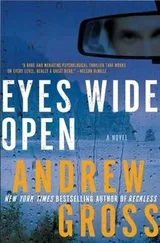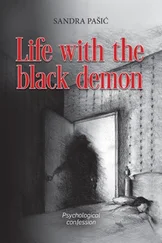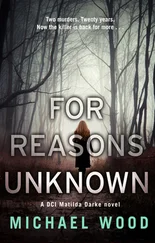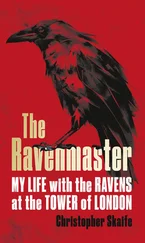But in 1938 she loses touch with her much admired leader, for suddenly something much more interesting is on offer: Traudl joins the ‘Faith and Beauty’ organization, a new unit within the BDM for Aryan young women of the Reich from eighteen to twenty-one years old. ‘The task of our League is to bring young women up to pass on the National Socialist faith and philosophy of life. Girls whose bodies, souls and minds are in harmony, whose physical health and well-balanced natures are incarnations of that beauty which shows that mankind is created by the Almighty,’ says Jutta Rüdiger, who became head of the BDM in 1937, describing its aims. ‘We want to train girls who are proud to think that one day they will choose to share their lives with fighting men. We want girls who believe unreservedly in Germany and the Führer, and will instil that faith into the hearts of their children. Then National Socialism and thus Germany itself will last for ever.’
As in most of the youth groups of the Third Reich, there is hardly any discussion of politics in the Faith and Beauty organization. Its activities concentrate on doing graceful gymnastics and dancing, deliberately cultivating a ‘feminine line’ so as to counter any ‘boyish’ or ‘masculine’ development. In fact this gymnastic dancing is also a way of making use of young women for the purposes of the Party and the state◦– not, of course, that anyone explicitly tells them so, and Traudl Junge herself hears about it for the first time decades after the war. Their artistic commitment is intended to bring these young girls up to be ‘part of the community’, and keep them from turning prematurely to the role of wife and mother; instead, they must continue to devote themselves to ‘the Führer, the nation and the fatherland’. Finally, Faith and Beauty will also qualify some of the rising generation of women for leadership; that is to say for posts in the BDM, the Nazi Women’s Association or the Reich Labour Service.
Traudl is not burdened with such subjects as ‘structuring your life’, or ‘political and intellectual education’, which are also a statutory part of the Faith and Beauty curriculum, or if she is then she cannot remember it now. But she is fascinated by the Third Reich’s grand cultural spectacles◦– as ‘capital of the movement’ Munich is a city of festive parades. The pomp which ushers in the Day of German Art in July 1937 and the two following years, with a procession of ‘Two Thousand Years of German Culture’ covering over three kilometres, fills her with enthusiasm, and so does the ‘Night of the Amazons’ held annually between 1936 and 1939 in Nymphenburg castle park. The Nazi concept of emotional self-presentation as a way of binding people ideologically together is working. Moreover, Traudl’s sister takes part in the supporting programme for the Day of German Art, dancing the performance of the Rape of the Sabinę Women on the stage erected by the Kleinhesseloher See in the English Garden. Traudl herself, in a minor way, participates in the cultural endeavours of the Nazis. She has a walk-on part in the ‘Night of the Amazons’, and at the age of fifteen models for the Swiss sculptor and marionette carver Walter Oberholzer, who has a commission to provide a statue for a fountain. The bronze girl throwing a ball to a faun whose mouth throws up jets of water has Traudl’s attractively shaped body, although not her face. This sculptural ensemble is exhibited in the House of German Art in 1937.
It is impossible to describe adolescents like Traudl as being clearly for or against the Third Reich, as impossible as is probably the case with the majority of the German population of the time, and certainly the young people. Although Traudl allows the aesthetics of the lavish spectaculars to intoxicate her, and enthusiastically joins in the rejoicings over the triumphs of German athletes in the Olympic Games and Hitler’s non-political successes, she finds the cruder side of party politics distasteful. The ‘extreme Nazism’ and the ‘machinations of its big shots’ strike her, so she says today, as ‘proletarian’ and ‘narrow-minded’. However, she is as far as most of her contemporaries from questioning the government on that account. She can laugh at the Hitler jokes that go the rounds, she finds Der Stürmer with its anti-Semitic caricatures strange and repellent, but she does not realize that the very lives of Jews and political opponents of the Party are threatened. There are three Jewish pupils in her class at the Lyzeum. During their time together at school◦– that is to say, up to 1936◦– these girls are treated just like the others by both teachers and pupils. If their Jewishness is mentioned at all it is only as their religious faith. Later she loses touch with the three girls. One, she hears, is emigrating with her parents, but to this day she knows nothing of the fate of the other two. At eighteen, Traudl knows hardly anything about the November 1938 pogrom and the ‘retaliation wreaked on Jewish shops, most of which had all their windows broken’, as the Münchner Neuesten Nachrichten reports next day, or about the burning synagogues and the summary arrest of hundreds of Jewish men. When she and her friends hear later of these acts of Nazi brutality they do not like them, but they quell their doubts by thinking that such an event must be unique. Ultimately, it affects them as little as all the other anti-Jewish measures: the first boycott of Jewish shops decreed by the state on 1 April 1933; the notices in public places with their inscription: ‘Jews banned’; the total ‘de-Judaizing’ of the economy from early in 1939; the marking out of Jews by the yellow star after September 1941. She claims that she can remember only a single meeting with a woman wearing it◦– a fleeting impression, and she thinks no more of it. That episode shows how well repression works.
Traudl, like many young people in Germany at the time, lives a life untroubled by politics. Or so she feels, anyway, which once again confirms two facts that appear contradictory only on the surface: first the regime’s skilful tactics in building up a ‘state youth’ that would toe the line, and second the existence of areas in which ‘uninvolved’ young people like Traudl could move freely and◦– as they thought◦– entirely unobserved.
In these years Traudl’s interests focus on rhythmic gymnastics. Her dream, her ever more fervent wish, is to make dancing her career, like her younger sister. She has no other, more down-to-earth ambition. She has left school in 1936 after taking only the first part of the school-leaving examinations – she leaves unwillingly, but she has to start earning money as soon as possible to help her mother. Take a year’s course at commercial college, people advise her, and then you can get a job as secretary in an office. A friend of a friend of hers is working for the Allianz, and this girl could help to find her a position with pension rights◦– a nightmarish idea for the lively Traudl. She certainly doesn’t want to work for the Allianz, but she unenthusiastically attends commercial college, reluctantly learning to touch-type – ‘Some girls may have a gift for it, Mother, but I certainly don’t!’ She gets on better with shorthand and book-keeping. When she has finished her course she looks for a job, with one prime requirement in mind: it must leave her enough time for dancing. Finally she gets a position as a clerk at the Munich branch of Vereinigte Deutsche Metallwerke, and soon she is running the stockroom where drills are stored and regularly doing the inventory◦– a challenge in itself, quite apart from the fact that the firm’s chauffeur keeps following her down to the stockroom and showing her pornographic pictures. Traudl sees nothing for it but to give notice◦– inventing a reason, since she dares not tell her boss the real one. Next she works temporarily in old Councillor Dillman the notary’s office. She moves to Rundschau Verlag in Ohmstrasse in 1939, and becomes assistant to the editor-in-chief of Die Rundschau, a journal for the tailoring trade. When the deputy editor-in-chief is called up into the army she assumes his responsibilities, doing the work conscientiously and sometimes even enjoying it, but she has made up her mind to leave anyway as soon as she has passed her final dance exam.
Читать дальше
![Traudl Junge Hitler's Last Secretary: A Firsthand Account of Life with Hitler [aka Until the Final Hour] обложка книги](/books/416681/traudl-junge-hitler-s-last-secretary-a-firsthand-cover.webp)



![Джонатан Димблби - Barbarossa - How Hitler Lost the War [calibre]](/books/385421/dzhonatan-dimblbi-barbarossa-how-hitler-lost-the-w-thumb.webp)







